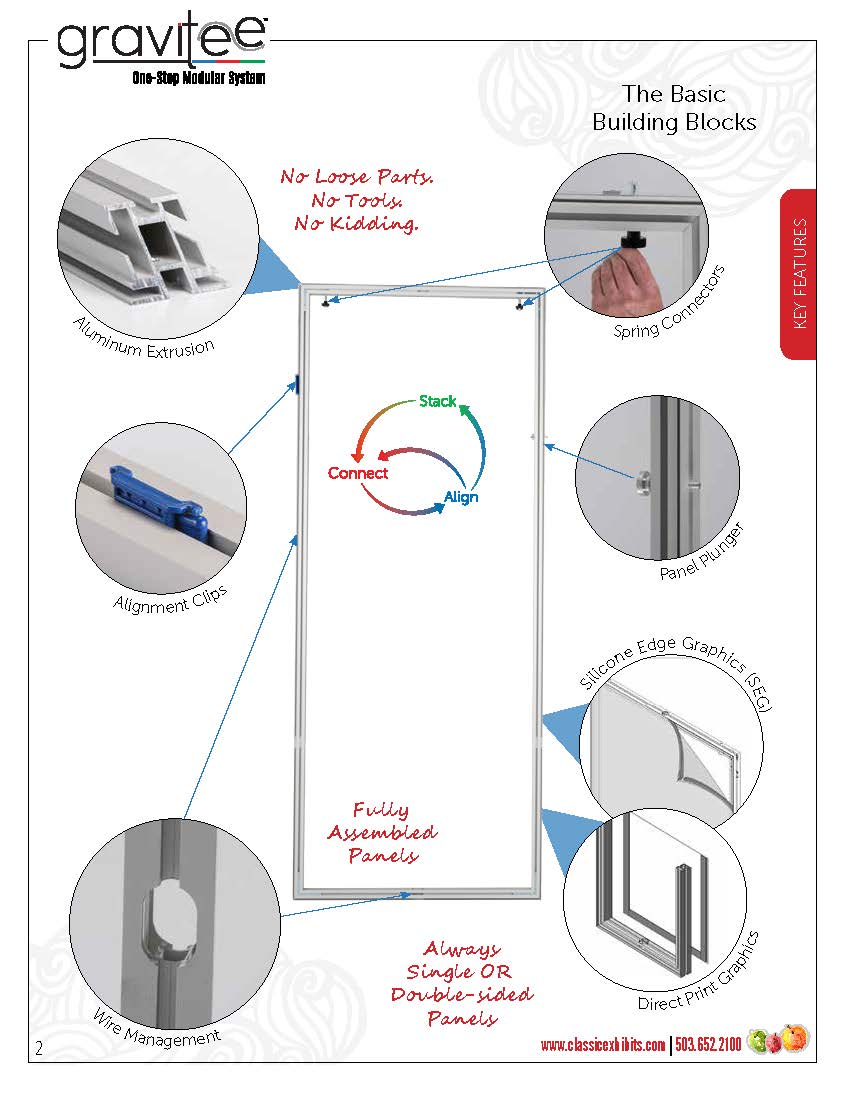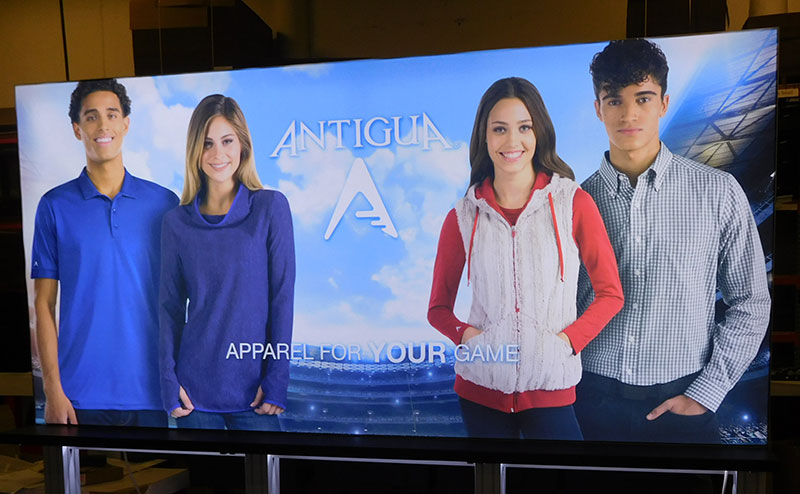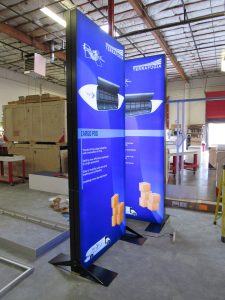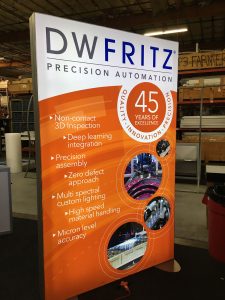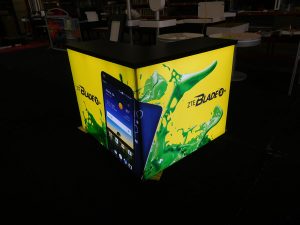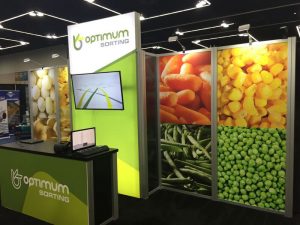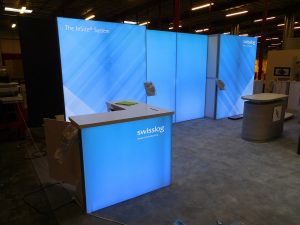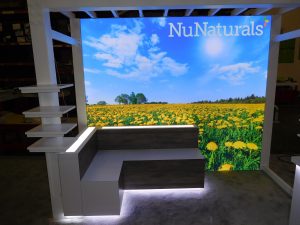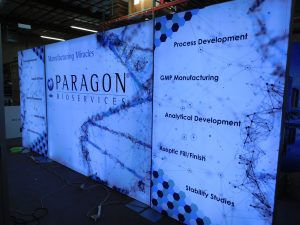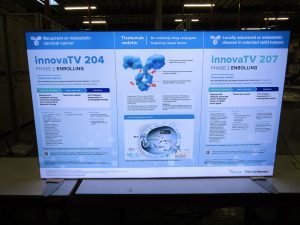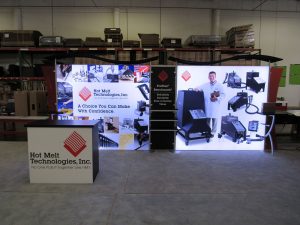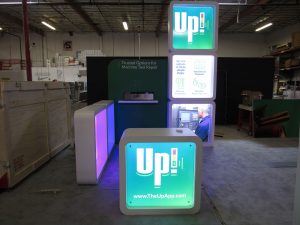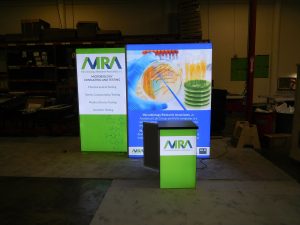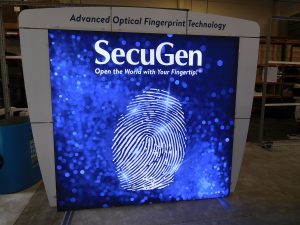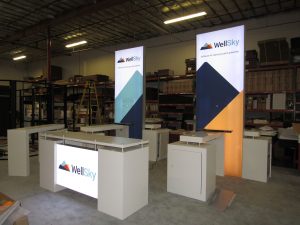
How many of you out there have been in your industry for longer than 5 years? 10 years? 20? Look, I’m a Millennial (but really, truly an Xennial) and part of what defines us is the sort of “bounce” from industry to industry, job to job — essentially, career building with fast jumps from one thing to the next. I’ve officially been with Exhibits Northwest in Seattle for three years, and in the Trade Show industry for… you guessed it… three years! And last week, I went to my first EXHIBITORLIVE in Las Vegas. Are you ready to hear what this “newbie” thought?
It’s a bit trite, but honestly, MAGICAL is the best word to describe it. Literal magic and figurative magic! So, for all of you seasoned pros out there, do me a favor: remember your first real dive into your industry’s deep roots (Trade Show or otherwise) and join me as I tell you about mine.
The Magic of Sneakers
2.5 years ago, my very first 20×20 island client exhibited in Vegas, and I was on the show floor supervising the install. I knew I needed comfortable shoes, so I did some research and decided Tieks would be cute AND comfy, based on tons of excellent reviews. Here’s what some of you may not know about me: a large part of my identity is SHOES. I’ve worked in the high-end shoe world, and I’m a bit of an admitted shoe snob. And at the time, I did not really own a pair of sneakers that didn’t look like I had them for 10+ years (because they were literally that old and I wore them to do house projects involving paint). Nor did I want to buy or wear sneakers in a professional public place!
Well, after walking 20 miles in 2 days in the Mandalay Bay Convention Center, wearing little flats and walking on concrete floors, my entire body felt like I was 85 years old with bad hips. Oh, man. Lesson learned! I still love my Teiks, but my eyes were opened — I needed supportive sneakers. So, while I still want to look cute (sneakers are not my favorite shoe genre), I have learned the MAGIC of sneakers on the trade show floor! This time, I walked and walked all over EXHIBITORLIVE between Mandalay Bay Convention Center and Luxor, and I wasn’t waddling through the airport upon my departure. WIN! When your feet are happy, you can focus on making connections, saying yes to that walk back across the show floor or to drinks with a vendor. But I’m still on the hunt for shoes that are fab and feel like pillows… hmmm.
The Magic of “Behind the Curtain”
“Pay no attention to the man behind the curtain!” ~ The Wizard

Events are full of behind the curtain magic. Trade Shows are no different. Walk behind a booth or look in the closet, and you’ll find electrical outlets and cords, laptop bags, extra swag and maybe even a person sneaking in a phone call or work! But what’s really cool is seeing what makes the display work: What’s behind the graphic? What’s behind that pipe and drape? What’s under the flooring? Admittedly, Exhibits Northwest does not (yet!) specialize in large format video tech — think, Giant LED Media Wall.
We refer or outsource these needs for our clients, so I’ve always been a little hands-off about taking ownership of a Media Wall as part of an exhibit strategy. But, being able to see behind the curtain (literally), to get a better understanding of how it works and how to explain to and prepare my clients for the cost (dollah dollah bills, y’all!) really helped me put some puzzle-pieces together. I slipped behind a curtain to use a hidden restroom, and low-and-behold, there was the back of a media wall! Such a great example of the specialized install skill and technology that makes them work.
Seeing a Media Wall is impressive, but the cost, time and technical skill involved in making it happen is taken for granted by the audience. There were also other cool tech innovations (moving image and RGB lightboxes, digital shadow boxes, and cookies with your printed selfie on them), but what struck me the most was really being able to see a giant Media Wall’s backside secrets!
The Magic of Team Bonding

As I said, I’ve been with Exhibits Northwest for three years, but for reasons I can only attribute to time flying by, I never really spent quality time with our team in Portland, namely, our Senior Account Executive, Laura Magdalen. Laura, thank you for being as eager as I was to get to know each other better! We experienced some MAGIC as we found out we have lots in common and can learn from each other.
We also got to hang with our newest Portland addition, Bobby Brown. Having meals and walking the show floor together, with our Manager, Michael McCord was beneficial beyond magic. We took our fast 2 days together and made the best of it, bonding over stories about spiders and food we hate. Everyone making fun of me for thinking there were two pyramids in Vegas (yeah yeah, true story, I got confused, ok!?) and laughing together as we watched Laura “schlep” her suitcase around. Bonding as a team is so crucial, and I am thankful for the magic of laughter and comradery.
And… Actual, MAGIC!
Our friends at Classic Exhibits had a performing Magician in their booth! He blew my mind several times, making me question the existence of mind-reading! Classic Exhibits is certainly “Knot Your Typical Exhibit Builder,” and they had a magician to prove it. His act was clever and thoroughly connected to the theme and message, creating a fun experience that also helped break the ice to make connections with the Classic Exhibits team. Ask me how that magician knew what I wrote on a pad of paper that he wrapped closed in a rubber band? I have no idea. But ask me how Classic Exhibits builds custom booths that impress my clients… well, that is less of a magic act and slight-of-hand, but more like the magic of teamwork.
I was told during my interview three years ago that once you get into the “Trade Show Business” you can’t leave. And I’ve heard it multiple times since then too — “Erica, you’re stuck with us now!”
OK, sounds good to me. Thank you for the welcome.
Erica Dougherty, Exhibits Northwest, erica@exhibitsnw.com




